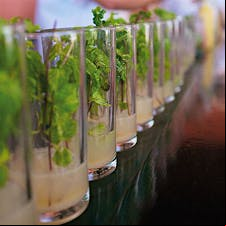Havana: The Lost City of the Caribbean

Say the city’s name out loud and the word triggers a cascade of images in the mind’s eye.
Hot tropical nights lit by dim yellow street lights. Hip-gyrating rhythms of native Son music drifting from bars and clubs. Lusty dancers moving to the beat. A searing sun burning down on the wave-drenched seaside promenade, the Malecón. Alluring aromas of cigars filling the air. Sweet elixirs of rum and lime exploding on the tongue.
Those same visions of Havana, Cuba, existed before the revolution of January, 1959, and even as life is different there today, much also has not changed. Havana was once a playground beckoning Americans, but its doors slammed shut with Fidel Castro’s takeover of the island. For more than 50 years Havana has existed only as a mythological land for its northern neighbor, which quickly imposed wide-ranging embargos on commerce and travel that have isolated Cuba in an ideological time-warp. However, at least in part, it has been Cuba’s pariah status and the attendant economic stagnation that preserved Old Havana. Large swaths of the city remain untouched by modern buildings. Only widely scattered Soviet-era monstrosities jut out above its colonial skyline.
And while you can’t ignore the lack of maintenance on many of the older buildings, extensive renovations of Habana Vieja are underway. The crumbling, dilapidated buildings juxtaposed against the sparkling, freshly painted and sleek stucco walls of the renovated edifices speak to a future grandeur. Amidst the obvious signs of potential and failed promise, much of what made Havana alluring in the 1950s remains intact today. The music. The art. The cigars.
If nothing has changed, why another travel guide to Havana? With European tourists arriving by the thousands, Cuba is slowly upgrading its tourist infrastructure to meet the demand and compete with other tourist destinations in the Caribbean.
New hotels and restaurants are emerging on the scene. Many of those are being developed by government agencies in conjunction with international partners and are definitely a step up from some of the older places. And, with recently implemented government regulations allowing more private businesses, Havana is witnessing one of the biggest expansions in restaurants and bars since the first wave of privately owned establishments was allowed back in the mid-1990s. On top of that, Habanos S.A. is rushing to expand its presence throughout Cuba, so new Casas del Habano are opening around the country with a total of 17 currently operating.
The last piece of the puzzle for Americans is the publication of new travel regulations announced in May, 2011. In a simplistic nutshell, the regulations have reverted to the standards of the Clinton-era, which allowed travel in a variety of categories: medical missions, academic research and artistic endeavors. Business-to-business s are now largely permitted under certain conditions. The license process is still fairly complicated, but instead of an almost automatic rejection of a request during the last 10 years, the licenses are being granted again. This means more and more Americans will be finding their way to Cuba, and more specifically Havana.
 |
Dave Savona and I spent a week in Cuba earlier this year, researching the old and the new in Havana. We decided to focus this in-depth report on Havana because for now it is most interesting, most compelling and most accessible for most foreign visitors. We have added in one side-trip to Pinar del Río for our readership—if Havana, Cuba, is their Holy Land, then the Holy Grail is in Pinar del Río. We have provided our choices for the best hotels (including one for the budget minded), the best restaurants, the coolest night spots and a complete list of Havana’s Casas del Habano, as well as some other cigar shops in the city.
There is a word of caution. Things are changing rapidly in Havana. Make friends with your concierge immediately, and don’t be afraid of taking on a guide. There is not a Zagat’s or Michelin for Cuba, and certainly not a reliable CitySearch database for hotels and restaurants. It’s a word-of-mouth network that constantly updates itself and is 100 percent dependent on individual knowledge. Three of the restaurants we ate at were not there six months previously, and half the people we asked hadn’t heard about them yet. Other people kept telling us about places that our main sources hadn’t heard about yet either. So, be a little adventurous. If someone says they’ve heard about a great new place, try it out. You may discover something extraordinary.
We hope you decide to visit Havana. For a cigar lover, it should be a no-brainer. But even for those who aren’t, the city offers beautiful and exhilarating changes as it begins to emerge from 50 years of stagnation. It is a wonderful place. Cubans are friendly and fascinated with Americans, wanting to talk about everything from the New York Yankees to where you are from and even about their frustrations with the government. They’ll chat with you as long as you feel like talking. In our humble opinion, people-to-people is the quickest path to long-lasting change in Cuba. Going there will only speed it up. Open the door.


















